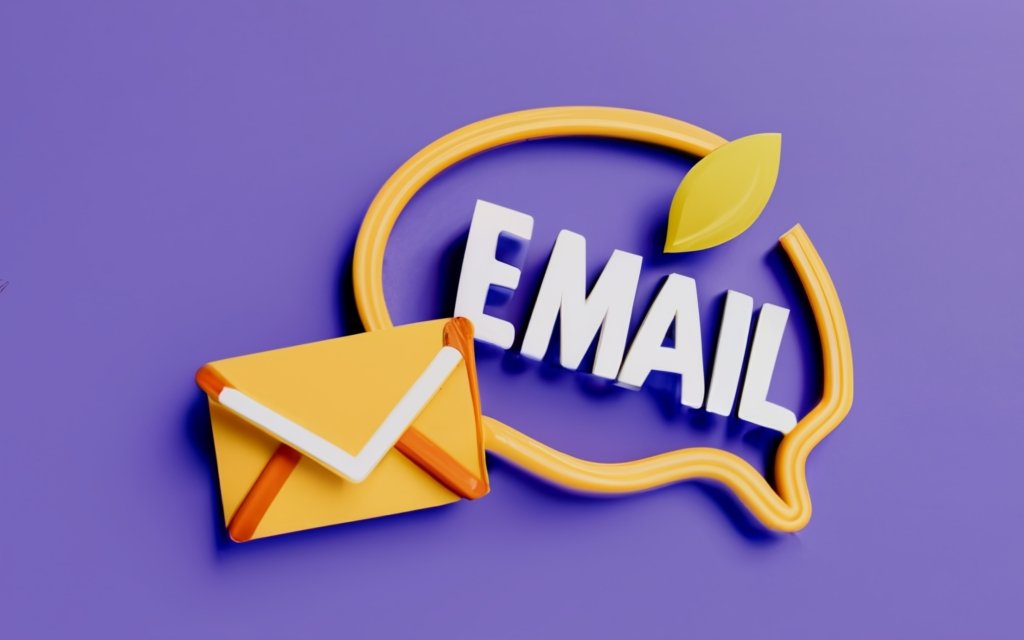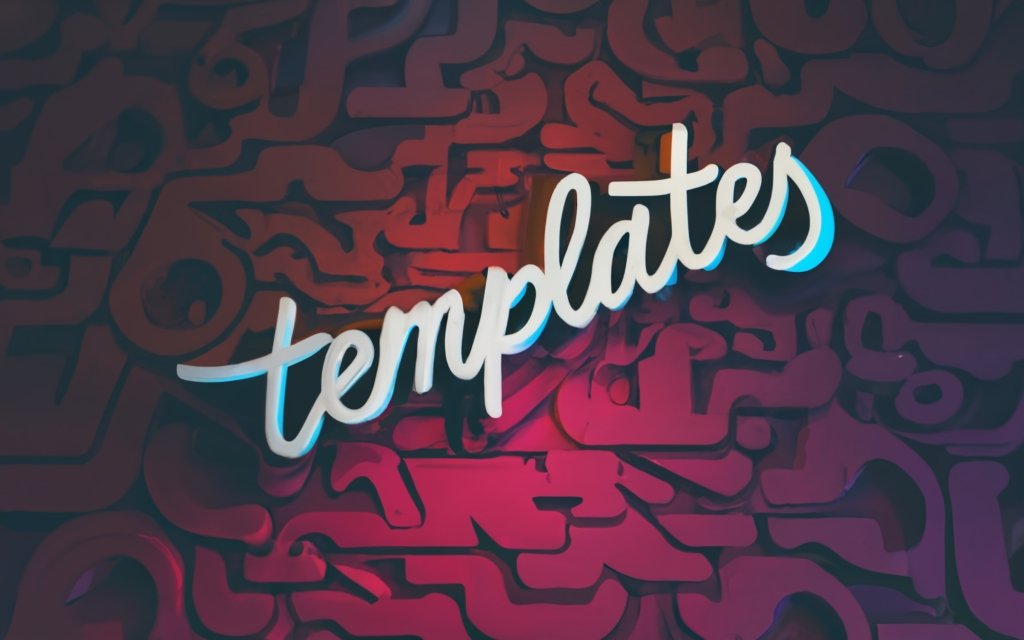Repeatedly typing the same emails in Outlook day after day? Crafting similar calendar events over and over? Entering duplicate data into contact records and tasks?
You can save countless hours by converting repetitive Outlook actions into streamlined templates. But basic templates only scratch the surface of this time-saving tool’s potential.
Advanced customization unlocks next-level productivity through templates that standardize workflows, remain dynamic, and automate administrative tasks across individuals, teams, and organizations.
This comprehensive guide reveals tips and tricks to master Outlook templates for emails, calendars, contacts, tasks, and beyond. You’ll learn how to:
- Create customizable email templates with fillable fields
- Design visually striking messages with personal stationery
- Standardize calendars, contacts and tasks with reusable templates
- Build intelligent templates that pull data dynamically
- Supercharge templates with VBA macros and custom forms
- Organize, maintain, and collaborate on template libraries
Don’t just use Outlook – make it work for you. Read on to transform this indispensable tool from an email manager into an engine powering productivity.
Let’s dive in to mastering Outlook templates!
Using Personalized Stationery in Outlook
Outlook stationery allows you to customize the look and feel of your email messages with backgrounds, images, and other design elements. Using distinctive stationery is an excellent way to enhance your personal brand and make your emails stand out. In this section, we’ll explore what stationery is, how to create custom stationery themes, and then apply them to all or individual messages.
What Is Email Stationery?
Stationery refers to the formatted backgrounds, colors, and graphical elements applied to email messages. Outlook includes a selection of built-in stationery themes you can choose from. But you can also design your own customized stationery to match your personal or company brand identity.
Email stationery is only supported for messages in HTML format, not plain text emails. So before creating any stationery, it’s important to set your message format to HTML in your Outlook options.
Some key elements you can customize with email stationery include:
- Background colors and images – Set a colored or graphic background for visual interest.
- Horizontal lines – Add line dividers in different styles and weights.
- Text formatting – Custom fonts, sizes, and text colors.
- Bullets & numbering – Match numbering styles to your brand guidelines.
- Header & footer elements – Such as company logo, contact info, date, etc.
- Graphics and icons – Illustrations, emoji, dividers, banners, and more.
Step-by-Step Guide to Create New Stationery
Follow these steps to design and save custom stationery in Outlook:
- Create a new email message. This will become your stationery template.
- Customize the message with your desired formatting and design elements using the options on the Format Text and Insert tabs.
- Make sure to save any background images or graphics you want to include on your local computer first.
- When your template design is complete, go to the File menu and select Save As.
- In the save location box, paste this:
%appdata%\microsoft\stationery - Enter a name for your stationery file and select “HTML” as the file type.
- Click Save to store the stationery template. You can now close the message.
Once saved, your custom stationery will be available to use for new email messages.
Applying Stationery to All or Individual Emails
There are two ways to use your stationery – apply it automatically to all new messages or manually to individual emails.
To add stationery to all new messages:
- Go to the File menu > Options > Mail tab.
- Under Stationery and Fonts, click Stationery.
- Browse the available themes and select your custom stationery.
- Click OK.
Now any new email you compose will use the selected template.
To use stationery for a specific email:
- When composing a new message, go to the Insert tab.
- Click the Stationery button and pick your custom theme.
- The stationery will be applied to that individual email only.
This method allows you to use different stationery designs on a message-by-message basis.
Design Tips for Effective Email Stationery
Here are some best practices when creating Outlook stationery:
- Pick a maximum of 2-3 colors to maintain a clean, professional look. Avoid jarring color schemes.
- Make sure any text over background images has sufficient contrast to remain readable.
- Limit use of large graphics which are data-heavy. Keep file sizes reasonable.
- Use fonts and text sizes that are easy to read on screens. Avoid intricate script or display fonts.
- Reserve stationery for internal business communications or one-off emails. Avoid applying it universally.
- Set up different stationery templates for major company divisions, events, or audiences.
- Change stationery seasonally or keep designs evergreen. Avoid relating to outdated events.
- Make sure your imagery and branding elements are consistent across stationery and other assets.
With personalized email stationery in Outlook, you can craft branded, eye-catching messages that make an impact on recipients. Following best practices for professional design will ensure your custom themes enhance rather than detract from your email communications.

Creating Reusable Quick Parts
Outlook’s Quick Parts feature allows you to save content blocks for reuse across emails, calendars, contacts, and other item types. This enables efficiency by letting you insert frequently used information like signatures, disclaimers, and meeting text with just a few clicks. In this section, we’ll learn what Quick Parts are, how to make new ones, and how to use them in Outlook items.
What Are Outlook Quick Parts?
Quick Parts are snippets of reusable text or images that can be inserted into Outlook items like emails, contacts, appointments, and more. They are used to add commonly repeated content without needing to type or format it each time.
Some popular examples of Quick Parts usage include:
- Email signatures – Contact info, logos, branding text, social media links.
- Email disclaimers – Legal, confidentiality, or unsubscribe notices.
- Meeting information – Locations, conference dial-in details, agendas.
- Greetings and closings – Common greeting and sign-off lines.
- Standard responses – Replies to common customer queries.
Anything that needs to be frequently inserted into different items can be an ideal Quick Part candidate. The key benefit is the content is saved once centrally and can be reused as many times as needed.
How to Make New Quick Parts
Follow these steps to create new Quick Parts in Outlook:
- Create a new item (email, calendar event, etc) and add the content you want in your Quick Part.
- Select and copy the text or images you want in the Part.
- Go to the Insert tab and click the Quick Parts icon.
- Select Save Selection to Quick Part Gallery.
- Give the Quick Part a descriptive name and click OK to save.
Once saved, the Quick Part will be available in your account to insert anywhere needed.
Here are some tips for using Quick Parts effectively:
- Give Quick Parts clear, specific names for easy identification.
- Consider categorizing Parts into folders for better organization.
- Limit Quick Parts to a reasonable size to keep them nimble and fast to insert.
- Review Parts occasionally for any outdated information needing updating.
Inserting Quick Parts into Outlook Items
Adding a saved Quick Part into a message, event, or contact is very simple:
- Open or create the target item.
- Place your cursor where you want the Quick Part inserted.
- On the Insert tab, click Quick Parts and select the name of the part you want.
- The Quick Part will be inserted into the item at the cursor’s position.
You can insert the same Quick Part multiple times into an item if needed. Parts can also be partially inserted and edited if only some of the content is relevant.
Alternatively, you can right-click within an item and select Insert Quick Part from the context menu. Or use the keyboard shortcut CTRL+F3 to open the Quick Parts menu.
Some tips for working with inserted Parts:
- Wrap Parts in brackets or color code for easy identification.
- Modify Parts as needed for a particular context vs inserting verbatim.
- Reuse Parts between Office apps like importing an Outlook signature into Word.
Quick Parts are a simple way to repurpose blocks of content in Outlook. Creating a set of customized Parts tailored to your routine responses will boost productivity across your email, calendar, and other communication items.
Advanced Template Customization with VBA Macros
Outlook’s built-in tools allow you to create and format templates to a certain degree. But power users can tap into VBA macros to unlock even more advanced customizations. In this section, we’ll explore how to write VBA scripts to supercharge your templates, prompt users for input, and dynamically update content.
Introduction to VBA Macros for Templates
VBA (Visual Basic for Applications) is the programming language that powers automation in Outlook. Macros written in VBA can manipulate messages, perform actions, modify templates, and more.
While writing VBA code does require some development skills, the payoff is immense flexibility to customize Outlook behavior beyond what the regular tools allow.
Here are some examples of what VBA macros enable for templates:
- Prompt users to enter values whenever a template is used.
- Pull in data from external sources to populate templates.
- Apply conditional formatting or logic like if/then statements.
- Loop through and modify templates in bulk.
- Add complex customizable forms and user interactions.
- Automate processes like sending emails from templates.
If you can dream up a way to enhance and customize Outlook templates, chances are VBA macros can make it happen!
Prompting Users for Input with Custom Forms
One very useful application of VBA is to display input forms when a template is used. This allows the user to dynamically provide information that automatically populates the message.
For example, when applying a sales template you could prompt for the client name, deal amount, and close date. The macro would then inject this data into the predefined template text and save the user time.
Here are the key steps to add an input form:
- Identify the variables you want the user to provide.
- Add placeholders like [ClientName] in your template text.
- Use InputBox functions in VBA to capture the user’s input for each variable.
- Replace the placeholders with the inputted values.
- Display the finished message body with the entered data.
The prompts and variables can be completely customized to your template’s needs.
Dynamically Updating Template Content
VBA also allows templates to pull in data dynamically from external sources when used. For example, you could have a template that imports latest sales figures from an Excel workbook or CRM system into the message body automatically.
Or use date variables in VBA to insert today’s date, the user’s birthday from contacts, or calculate dates and times. The macro script behind the template does the heavy lifting so content stays up-to-date.
Some other dynamic data ideas:
- Insert user’s name, contact details, or signature from their Outlook profile.
- Look up latest project data from SharePoint or a database.
- Bring in latest email marketing stats from your email service provider.
- Calculate time remaining until a deadline referenced in the template.
VBA macros open the door for templates that customize themselves uniquely each time they are used. This saves effort while making Outlook communication smart and dynamic.
Getting Started with VBA Macros for Templates
Learning VBA can feel intimidating as a beginner, but gets easier with practice. Here are some tips to get started:
- Use the macro recorder to generate the initial code which you can then customize.
- Start small with minor tweaks before attempting complex functionality.
- Tap into VBA learning resources like courses, blogs, and forums.
- Find sample code online that matches your use case and learn from others.
- Be methodical and comment your code at each step.
While VBA is an advanced skill, the payoff of deeply customizable Outlook templates makes it worth the effort for power users who want to take their templates to the next level.

Managing and Organizing Templates
Once you’ve built an arsenal of customized templates in Outlook, you’ll want to manage them effectively so they are easy to find and organize. This involves practices like storing templates properly, copying them between machines, and responsibly editing or deleting ones you no longer need.
Best Practices for Storing Outlook Templates
Outlook allows you to save templates (*.oft files) anywhere on your local file system. However, there are ideal locations that make templates simpler to manage long-term.
The recommended locations for template storage are:
- Personal Templates Folder – This default Outlook folder is stored here: %appdata%\Microsoft\Templates
- Shared Templates Folder – For templates to share, use this default location: %appdata%\Microsoft\Templates\LiveContent
Storing templates in these default folders (instead of random locations) keeps them centralized and accessible in the templates dialogs within Outlook itself.
Other template storage tips:
- Organize templates in appropriately named subfolders for easier search/identification.
- Prefix template filenames consistently to group related ones.
- Add comments or descriptions to summarize template contents and use cases.
- Limit access permissions for any sensitive template content.
- Back up important templates regularly in case of file corruption.
Thoughtful template storage goes a long way in preserving your work for the long haul.
Copying Templates to a New Computer
When migrating to a new work computer, you’ll want to transfer your Outlook templates to have them available on the new machine.
The process is simple:
- On your old computer, navigate to your personal and/or shared templates folders (see locations above).
- Copy the *.oft files to a portable storage device like a USB drive.
- On the new computer, paste the files into the same template folders.
- Restart Outlook and the transferred templates will appear in the templates dialog.
Optionally, you can store templates on networked drives or cloud storage instead of locally to have a single source accessible from multiple machines.
Editing or Deleting Outlook Templates
As needs change over time, you may need to update or remove outdated templates. Here are tips for template maintenance:
- To edit a template – Open it, make changes, and save with the same .oft filename.
- To delete a template – Right-click the .oft file in Windows Explorer and select Delete. Then restart Outlook.
- Avoid orphans – Don’t leave old unused templates cluttering up the templates list.
- Review periodically – Every few months, reevaluate templates for relevance and refresh those needing updates.
- Update wisely – Carefully test edits to avoid unintentionally breaking or altering templates.
- Use version numbers – If making major revisions, save edited copies as v2, v3 etc. in case you need to revert.
- Backup first – Before deleting or overwriting major templates, back them up or save copies just in case.
Apply these practices to future-proof your templates and avoid accumulation of outdated or broken ones over the long run. A little regular maintenance goes a long way.
With an orderly template storage system and responsible edit/delete habits, managing countless custom Outlook templates becomes an achievable feat. Use these tips to tame your ever-growing template collection.
Templates for Calendars, Contacts, Tasks
Email is the most common application for Outlook templates. But you can also use templates to customize other Outlook items like calendars, contacts, tasks, and more. In this section, we’ll explore how to work with templates across appointments, contact records, tasks, and other items.
Using Templates for Calendar Events
Outlook’s calendar templates allow you to define recurring events, meetings, and appointments that can be quickly reused.
For example, you could have a template for weekly status meetings that automatically populates the date, time, location, and attendees for each new instance.
Here are some other examples of calendar templates:
- Default event template containing your standard information.
- Meeting templates for different types like daily standups, performance reviews, etc.
- Templates for birthdays, conferences, holidays, and annual occasions.
To create a calendar template:
- Make a new appointment with your standard details entered.
- Go to File > Save As and pick Outlook Template (.oft).
- Open the template to create a new auto-populated event.
You can also customize invitee lists, insert contact details from your address book, and include attachments like agendas.
Designing Templates for Contacts
For frequently created contact records like customers, clients, or leads, templates can save time by automatically populating common fields.
Contact templates come in handy for:
- Capturing leads with preset fields for quick entry.
- Adding new employees with details like job title and manager.
- Onboarding vendors by merging their company info.
To make a contact template in Outlook:
- Make a new contact, and fill in the common fields needed.
- Go to File > Save As and pick Outlook Template (.oft).
- Open the template to generate a pre-filled new contact.
The template can include any fields you typically reuse like addresses, phone numbers, etc.
Task Templates to Standardize Work
Templates make it a breeze to define standard tasks that get reused regularly in your workflow.
Some examples include:
- Onboarding checklists for new employees.
- Recurring tasks like weekly status reports.
- Standard procedures like prepping materials or sending invoices.
To create task templates:
- Make a new task in Outlook and define task details like subject, start date, priority, and steps.
- Save the task via File > Save As and choose Outlook Template (.oft).
- Use the template anytime to quickly assign the predefined task again.
Templates bring consistency to frequently created items like appointments, contacts, and tasks in Outlook. Define them once and efficiently reuse them anytime.
Final Thoughts
Hopefully this guide has revealed all the possibilities that templates unlock in Outlook – from saving time on repetitive emails to deeply customizing calendars, contacts, tasks and more.
The key is to identify Outlook actions you perform repeatedly. Then convert those routines into templates that combine default content with dynamic customization.
With strategic template creation and thoughtful organization practices, you can establish an Outlook ecosystem that supercharges productivity and streamlines administrative work for individuals, teams, and organizations alike.
Outlook’s celebrated tools like Quick Parts, email stationery, and fillable forms reveal just a small fraction of what’s possible. Power users can tap VBA macros and custom add-ins to bend templates to their will.
Whatever level of customization meets your needs, templates remain timeless productivity tools that no Outlook power user should be without. Just be sure to revisit templates occasionally to keep them aligned with evolving needs.
Now you have all the techniques and insider tips to implement templates skillfully across the Outlook landscape. Go forth and let templates alleviate life’s small annoyances, while empowering more impactful communication!

Tips for Using Templates Effectively
Now that we’ve explored all of Outlook’s template features and customization techniques, let’s review some best practices to use them effectively. We’ll cover ideal strategies for creation, common issues to avoid, and smart ways to leverage templates that boost productivity.
Best Practices for Making Outlook Templates
Carefully crafted templates have maximum impact, while poorly made ones can hamper productivity. Follow these guidelines for template success:
- Give templates clear, specific names so users can easily identify them.
- Keep template content concise and clutter-free for quick application.
- Use consistent formatting and structure across related templates.
- Include optional fillable fields where values tend to change.
- Personalize templates for individual users or departments when relevant.
- Set reminder dates for reviewing and updating templates periodically.
- Store templates centrally so team members can access (with proper permissions).
- Limit access to confidential templates like legal disclaimers or HR notices.
- Comment your VBA macro code if enhancing templates programmatically.
Taking time to create quality templates pays off exponentially over their lifetime of repeated use.
Common Template Pitfalls and Troubleshooting
While templates improve efficiency greatly, beware of some common pitfalls:
- Using overly complex templates defeats their time-saving purpose. Avoid feature overload.
- Neglecting to update templates causes inaccuracy over time as information becomes outdated.
- Generic templates with vague names lead to hunting for the right one. Name descriptively.
- Excessive templates can bog users down in decision paralysis. Cull unused ones.
- Failing to format templates consistently looks unprofessional. Use consistent styles.
- Templates with errors propagate mistakes at scale if not fixed. Review error-free operation often.
- Anonymous templates without ownership make managing them long-term difficult. Assign owners.
Avoiding these pitfalls keeps your template suite running smoothly as a productivity engine.
Smart Ways to Use Templates That Boost Productivity
Leveraging templates thoughtfully yields maximum benefits:
- Use Quick Parts for boilerplate content needed across different applications.
- Standardize processes with templates for repetitive tasks or communication.
- Eliminate reformatting work by designing templates with your desired styles.
- Reduce effort spent on routine items like calendar events or contacts.
- Dynamically populate templates with data to increase relevance and accuracy.
- Give mobile workers offline access to templates to enable productivity anywhere.
- Help new employees get up to speed quickly using well-designed onboarding templates.
- Aid consistency across large distributed teams with shared centralized templates.
- Increase development efficiency with templates for artifacts like status reports or meeting notes.
With smart usage, templates evolve from simple time-savers into transformers that optimize broad workflows.
Closing Recommendations
Hopefully these tips help you maximize success and avoid common template troubles. Keep them nimble yet personalized, consistently maintained, and infused into processes to transform productivity.
Strike a balance between templates enhancing flow versus hindering it. The ideal degree of templation depends on the nature of work. Empower users to create their own templates aligned to individual needs.
View templates as living tools requiring care and feeding like a garden. Weed out obsolete ones and nurture new blossoms continuously. Incorporate user feedback to improve.
Outlook templates implemented skillfully unlock potential for people to devote energy towards more rewarding work. Savvy template use liberates organizations from drudgery and frees minds for innovation.
Let templates be a rising tide that lifts all boats towards greater efficiency and impact. But beware over-templating complex work unfit for standardization. Use them artfully and judiciously.
Hopefully you now feel equipped to improve productivity across individuals, teams, and organizations with Outlook templates. Just keep our guidance in mind, and happy templating!

Key Takeaways
Outlook templates allow you to transform repetitive tasks into streamlined productivity engines. Follow these key tips to master templating:
- Start with email templates as the most common scenario to save time replying to routine messages.
- Use Quick Parts to save reusable content blocks like signatures and disclaimers.
- Make stationery templates to create branded, stylized emails that stand out.
- Add fillable fields to gather input dynamically when applying templates.
- Employ VBA macros to unlock advanced templating capabilities and customization.
- Organize templates carefully in designated folders and name descriptively.
- Apply templates thoughtfully after reviewing where they enhance rather than hinder productivity.
- Maintain templates by editing as needs change and removing outdated ones.
- Extend templates across other Outlook items like calendar events, contacts, and tasks.
- Collaborate on templates to maximize their impact across individuals and organizations.
The most powerful templates solve frequent annoyances and optimize workflows. With practice, you’ll learn how to elevate Outlook from merely managing information to transforming how work gets done.
Start by identifying repetitive tasks and communication prime for templating. Review where Outlook actions could become easier, consistent, more professional, and automatic. Then ruthlessly stamp out drudgery by designing templates that transcend the tedious.
Outlook’s tools offer a springboard to launch yourself into a more productive realm where technology lifts burdens intelligently rather than imposing new ones. You now have the template techniques – go elevate your Outlook practice to new heights!
Frequently Asked Questions
Q: What are the different types of templates in Outlook?
A: The main templates in Outlook include email templates (.oft files), calendar templates, contact templates, task templates, and Quick Parts.
Q: How do I create a new template in Outlook?
A: To create a new template, make a new item such as an email or calendar event, customize it, and then save it as an Outlook Template (.oft) via the File > Save As menu.
Q: Where are Outlook templates stored?
A: By default, Outlook templates are stored in your personal templates folder at %appdata%\Microsoft\Templates. Shared templates go in %appdata%\Microsoft\Templates\LiveContent.
Q: How do I use an existing template in Outlook?
A: To use a template, click New Items > More Items > Choose Form. Browse your personal or shared templates and open the one desired.
Q: Can I password protect my Outlook templates?
A: Yes, you can password protect Outlook templates by selecting that option when saving a new .oft file. This prevents unauthorized editing.
Q: How do I delete an Outlook template?
A: To delete a template, right-click on the .oft file in your file explorer and select Delete. Then restart Outlook.
Q: Can I organize my Outlook templates into folders?
A: Yes, you can create custom folders within your Templates folder to categorize different types of templates for easier access.
Q: What’s the easiest way to copy an Outlook template to another PC?
A: Simply copy the .oft template file(s) to a USB drive, and paste them into the Templates folder on the new computer.
Q: Is there a limit to how many templates I can create in Outlook
A: There is no set limit on the number of Outlook templates you can create and save. Just be sure to thoughtfully organize them.
Q: How do I customize templates with different fonts, colors or images?
A: When making a new template, use the options on the Format Text and Insert tabs to customize fonts, colors, and add images.
Let me know if you need any other common Outlook template questions covered!

